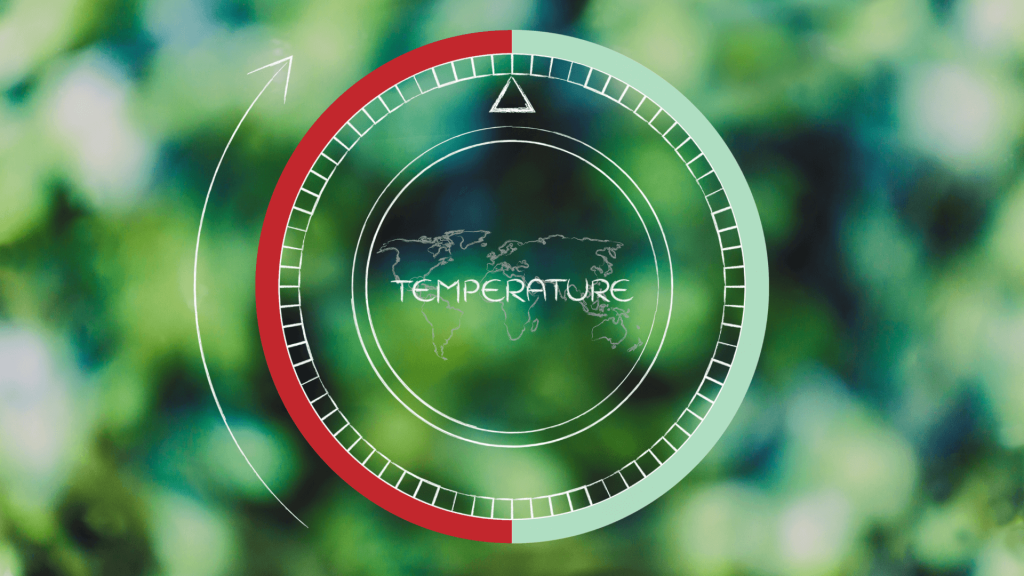Display Table of Contents
As we move further into the 21st century, energy efficiency and automation have become driving forces behind technological innovation. A case in point is the advent of smart thermostats—intelligent devices designed to regulate indoor temperatures and provide a host of other functions that traditional thermostats cannot. The traditional thermostats of yesteryears are giving way to their smarter counterparts, allowing homeowners to not only save energy but also enjoy a heightened level of comfort and convenience.
What Are Smart Thermostats?
Smart thermostats are Wi-Fi enabled devices that allow users to remotely control the heating and cooling systems of a building. Unlike conventional thermostats, these intelligent gadgets can learn from your behaviour, adjust themselves automatically, and provide analytics on your energy usage.
| Features | Smart Thermostats | Traditional Thermostats |
|---|---|---|
| Wi-Fi Connectivity | Yes | No |
| Remote Control | Yes | No |
| Learning Ability | Yes | No |
| Energy Analytics | Yes | No |
The Advantages of Smart Thermostats
The benefits of using smart thermostats go beyond mere temperature control. Below are some key advantages:
- Energy Efficiency: Through intelligent algorithms, smart thermostats optimise your energy usage, thereby reducing your carbon footprint.
- Cost Savings: By using energy more efficiently, you can expect to see a decrease in your utility bills.
- Convenience: Remote control capabilities mean you can adjust settings from anywhere using a smartphone or tablet.
- Data Insights: These devices provide detailed analytics, helping you understand your consumption patterns.
Understanding the Technology
While smart thermostats may seem like magical devices, they rely on a combination of sensors, machine learning algorithms, and cloud computing. The sensors measure factors like indoor temperature, humidity, and occupancy. Machine learning algorithms analyse this data to make predictive adjustments to your heating and cooling system. Many devices also sync with cloud servers, enabling updates and remote access.
Popular Brands in the Smart Thermostat Industry
While there are several players in the smart thermostat market, certain brands have distinguished themselves through innovative features and reliable performance. For instance, Nest offers a Learning Thermostat that adjusts itself based on your behaviour. Ecobee provides a thermostat with built-in Amazon Alexa, and Honeywell excels in providing a range of options for different needs and budgets.
“Smart thermostats represent one of the most impactful ways individuals can reduce their carbon footprint, with the added benefit of cost savings.” — Energy Trust Organisation
Installation and Setup
Switching from a traditional thermostat to a smart one involves a straightforward installation process. However, certain prerequisites must be met to ensure compatibility.
The existing wiring system, often referred to as a C-wire, plays a crucial role. Smart thermostats generally require a constant power source, provided by a C-wire, to support their advanced features. If your home lacks this specific wire, professional installation may be necessary.
Integrating with Smart Home Systems
One of the most compelling features of smart thermostats is their ability to integrate seamlessly with existing smart home ecosystems. Whether you use Apple HomeKit, Google Assistant, or Amazon Alexa, you can usually sync your smart thermostat for unified control. This integration allows you to create automation routines that incorporate multiple smart devices. For example, you can set up a “Good Night” routine that adjusts the thermostat, turns off the lights, and locks the doors—all with a single voice command.
Data Privacy and Security
As with any connected device, smart thermostats collect data on user behaviour and preferences. It is essential to understand the privacy policies of the manufacturer and how your data is stored, used, and potentially shared. Top brands like Nest, Ecobee, and Honeywell generally employ robust encryption methods to protect user data.
The Future of Smart Thermostats
As technology continues to advance, so too will the features available in smart thermostats. Anticipate even greater levels of automation, more accurate sensors, and broader integration with other smart devices. It is also reasonable to expect advancements in machine learning algorithms that make these devices more predictive and efficient.
“Smart thermostats are not just a fad; they are a key element in the evolving landscape of smart home technology.” — Journal of Environmental Studies
Choosing the Right Smart Thermostat
Selecting a smart thermostat that suits your needs involves consideration of several factors:
- Compatibility: Ensure that the device works with your existing heating and cooling system, as well as your smart home ecosystem.
- Features: Different thermostats offer varying features, from basic temperature control to advanced energy analytics.
- Budget: Smart thermostats come in a range of prices, with premium models offering more features.
- Reviews and Recommendations: Consult reliable tech review sites and consumer feedback before making a choice.
Government Incentives and Rebates
In an effort to promote energy-efficient practices, various governments and energy companies offer incentives for installing smart thermostats. These incentives often come in the form of rebates, discounts, or tax credits. Before purchasing a smart thermostat, it is advisable to check if any such incentives are available in your region.
“Switching to a smart thermostat is a small step with a big impact—both on the environment and your wallet.” — Energy Efficiency Council
Smart thermostats represent a significant milestone in the intersection of technology, comfort, and environmental stewardship. Their advanced features not only elevate the user experience but also contribute to global efforts in reducing energy consumption. By understanding their technology, benefits, and features, you can make a more conscious choice that aligns with your lifestyle and values.
Impact on the Environment
The potential environmental impact of adopting smart thermostats cannot be overstated. According to estimates from environmental organisations, widespread use of these devices could significantly reduce greenhouse gas emissions.
For instance, a smart thermostat can fine-tune temperature settings when no one is home, thereby conserving energy. These energy savings translate into a reduced carbon footprint, supporting global efforts to combat climate change.
Accessibility and Usability
Ease of use remains a cornerstone feature of smart thermostats. Most come with user-friendly interfaces that make it simple to program and adjust settings. Some models even provide accessibility features such as voice control and touch-free sensors, ensuring that they are inclusive and usable by people with different abilities.
Frequently Asked Questions
As smart thermostats continue to pique public interest, some common questions often arise:
| Question | Answer |
|---|---|
| How much can I save? | Estimates suggest savings between 10-20% on heating and cooling costs. |
| Is it hard to install? | Installation is usually straightforward but depends on existing wiring and heating/cooling systems. |
| Is my data safe? | Most reputable brands employ strong encryption and robust privacy policies. |
Industry Trends and Innovations
In an ever-evolving tech landscape, smart thermostats are not immune to changes and advancements. Companies are increasingly focusing on incorporating AI capabilities to make these devices even more responsive to environmental changes. Some upcoming features could include advanced air quality monitoring, adaptive learning that extends beyond temperature preferences to lifestyle habits, and even integration with wearable technology for biometric-based adjustments.
The Global Market
Although smart thermostats originated primarily in Western markets, their reach is becoming increasingly global. With growing awareness of climate change and a universal desire for energy efficiency, countries across continents are adopting this technology.
Market studies indicate an upward trend in sales, predicting that smart thermostats will soon become as ubiquitous as smartphones.
Local Regulations and Standards
Before purchasing a smart thermostat, it is prudent to be aware of any local regulations or standards that might apply. Some countries or municipalities have specific requirements for smart home devices, including thermostats. For instance, they may need to meet certain energy-efficiency standards or be compatible with local electrical systems. Compliance with these can be essential for both operational efficacy and eligibility for government incentives.
“Adhering to local standards is not merely a matter of legality; it is about optimising performance and ensuring the device contributes to, rather than detracts from, energy-efficiency goals.” — Journal of Regulatory Compliance
Case Studies and Real-world Applications
Numerous case studies confirm the efficacy of smart thermostats. In commercial settings, large-scale installations have demonstrated the potential for substantial energy savings. Hospitals, schools, and offices that have switched to smart thermostats report not only cost reductions but also improvements in overall comfort and air quality. These real-world applications serve as compelling evidence of the technology’s value.
Parting Thoughts: Why Smart Thermostats Matter
Smart thermostats are rapidly evolving from a luxury to a standard feature in contemporary homes, thanks to their numerous advantages and increasingly accessible price points. These devices bring a revolutionary change to home climate control, offering far more than individual comfort and convenience. They play a significant role in broader societal objectives, such as energy conservation and environmental sustainability.
” The smart thermostat is not merely a luxury item; it is an essential tool in the modernisation of our energy systems and a linchpin in the global efforts to mitigate climate change.” — International Energy Association
In an era where technology permeates nearly all facets of our lives, smart thermostats distinguish themselves through a unique combination of utility, technological sophistication, and ethical significance. They offer substantial contributions to address pressing global challenges like energy conservation and climate change mitigation.
” The age of the smart thermostat is upon us, and it marks a significant stride not just in technological advancement but in the conscientious living that modern society aspires to.” — Future of Technology Quarterly
The decision to adopt this transformative technology is thus a win-win situation. It provides immediate benefits, such as energy savings and enhanced comfort, while concurrently promoting a collective social good. The increasing adoption of smart thermostats is not just a fleeting trend but a significant, meaningful advancement in responsible living. It is high time these devices found their rightful place in every home and institution.








